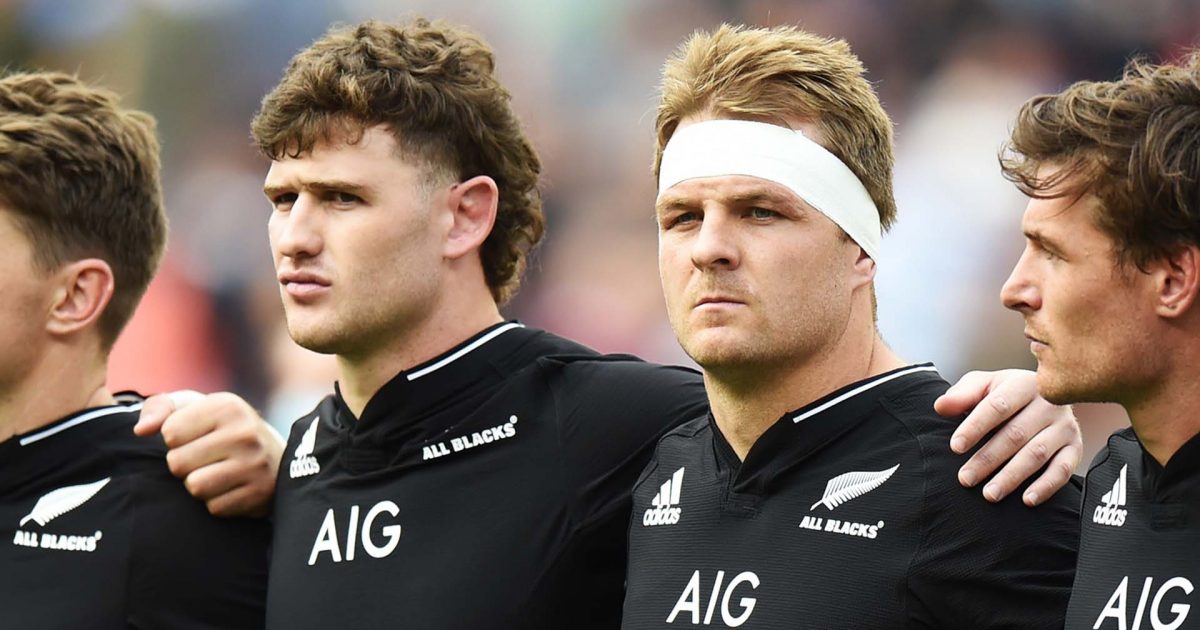Is the All Blacks' triple-axis of openside flankers a long-term option?

This weekend, the All Blacks will operate with three loose forwards who have been no strangers to playing in the No 7 jersey.
Dalton Papalii, Sam Cane and Ardie Savea will line up together for the first time when New Zealand takes on Ireland in Dunedin.
Regular lock Scott Barrett, last week’s surprise selection on the blindside flank, has shifted into the second row due to the enforced absences of Sam Whitelock, Tupou Vaa’i and Josh Lord, facilitating Papalii’s promotion from the bench.
That shift is one head coach Ian Foster wasn’t seriously considering for the weekend until Whitelock and Vaa’i went down in successive days.
“I think it’s fair to say we probably would have looked at Scooter [Barrett] again,” Foster said after naming his side for Saturday’s fixture.
“I think you’ll see him there again at some stage but for now it’s a chance for us to look at where we could have ended up on the second half last week, which is three more mobile loosies.”
As far as blindside flankers go, you’d be hard-pressed to find two more different players than Barrett and Papalii.
The former is a bulkier specimen who is perhaps more akin to the likes of Jerome Kaino and Peter-Steph du Toit. The latter is a smaller, more agile specimen who makes up for his less formidable set-piece presence with exceptional speed across the park.
While the All Blacks certainly need to have players with different strengths and skills in each position available for the opposition they’re facing and the game plans they want to employ, it’s unusual to see such a significant deviation in selection this weekend, given NZ are facing off against the same opposition for the second week in a row. Barrett played his role to perfection last week and it’s unlikely Papalii will be able to match that feat if he tries to adopt the same approach employed by the man he’s replacing.
There’s a man on the bench this weekend who could have been asked to take on a similar role to Barrett’s from the first game of the series, however, and that’s last week’s try-scoring debutant, Pita Gus Sowakula.
Sowakula has spent limited time in the No 6 jersey over the past two years but that’s no different to Papalii, who hasn’t featured in the role in almost two years.
With a number of players unavailable – including Whitelock, Vaa’i and regular blindside flanker Akira Ioane – Foster’s hand has been forced somewhat – but you still have to spare a thought for specialist number 8 Hoskins Sotutu. The Blues back-rower was competing with Ardie Savea for game time last year and, as such, unsurprisingly struggled to earn minutes. It appears that he’ll face the same challenge this year, despite being one of the form players throughout Super Rugby Pacific.
Perhaps there be more balance to the loose forwards with Sotutu at the back of the scrum – but Foster and co have evidently decided that fielding three former openside flankers across the three roles won’t have a negative impact on their game. While the All Blacks had no problems getting over the advantage line in the first test against Ireland last weekend, the same couldn’t be said on last year’s end-of-year tour. A man like Papalii might thrive if he can find gaps in the outer channels – as he showed when coming off the bench in the Super Rugby Pacific final – but can he punch holes in defences closer to the breakdown?
Starting with a loose forward trio of Dalton Papalii, Sam Cane and Ardie Savea is a somewhat left-field move from the All Blacks selectors and could cause some havoc on the ground but the biggest challenge this weekend for New Zealand remains generating front-foot ball – and that puts a big responsibility on the curiously balanced backrow.











































































Papalii is 6'4 249, Barrett is 6'6 245. Mass wiae then Papalii is a bigger man. Of the 2 Dalton is much closer to Jerome than Barrett. More similar in stature and athleticism. Dalton will be fine at 6